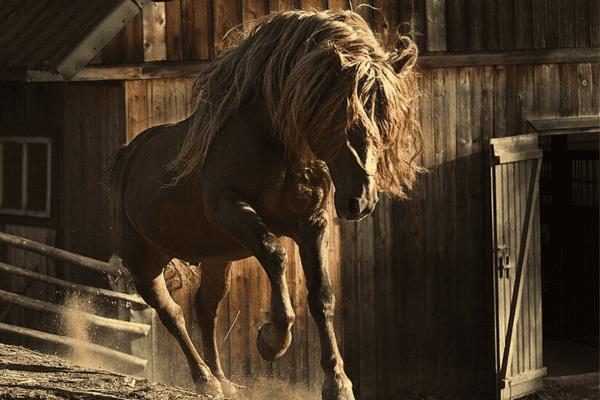Emerging from the serene regions of Romania, the Bucovina Horse represents an exceptional yet understated draft breed. This horse, distinguished by its tranquil demeanor, strikes a balance between the heft of a draft and the nimbleness of a lighter breed.
Unlike the more robust Romanian Draft, the Bucovina Horse showcases a more refined physique, aligning it closely with lighter draft breeds in terms of structure and capability. Although its fame has not spread widely beyond the borders of its homeland, within Romania, it garners significant admiration for its multifaceted utility.
The Bucovina Horse is adept at various tasks, including draught work, logging, and recreational riding, making it a valued and versatile asset in the regions it inhabits.
History:
Historical Roots in Romania
Origin in Romania’s Bucovina Region: The Bucovina Horse stands as a tribute to Romania’s bucovina region’s longstanding equestrian tradition.
Genetic Mosaic: This breed combines several horse lineages into one breed. It brings together the strength and robustness of Romanian Draft horses with those from Ardennes breeds as well as endurance of Hucul (also referred to as Hutsul or Hutzel horses).
Initial Breeding Purpose
Workhorse Origins: At its inception, the Bucovina Horse was created with utility in mind, specifically to serve forestry and agriculture tasks. This breed’s introduction fulfilled an unmet demand for strong yet reliable workhorses in these sectors.
Rarity and Distinctiveness
Bucovina Horse Remains Relatively Uncommon in Modern World: Despite its abilities and historical importance, the Bucovina Horse remains relatively uncommon today.
Variable Conformation: This breed exhibits a variety of physical conformations traits due to varying draft horse genetic influences in individual horses.
Retention of Hucul Characteristics: Bucovina Horses consistently demonstrate agility and toughness characteristic of Hucul breed horses regardless of their draft lineage.
Unique Coat and Genetic Markers
Roan Coat Phenomenon: Within the Bucovina breed, having a dog with a roan coat is rare and distinctive – an indication of Ardennes influence.
Post-War Ardennes Introduction: Following World War II, Romania made concerted efforts to increase horse stocks. One such measure included introducing Ardennes horses from France into local stock; their introduction left an indelible mark on Bucovina breeding, visible in their distinctive roan coat patterning of some specimens.
The Bucovina Horse is more than just a breed: it stands as an icon of Romanian equestrian history and showcases genetic diversity and adaptation. It embodies centuries of selective breeding for environmental adaptation; by protecting this breed we honor not just horses themselves but also honor the heritage of both land and people that helped to form them.

Characteristics and Traits:
Bucovina Horses stand out for their remarkable adaptability and hardiness. These medium-sized horses typically reach 15 hands (60 inches or 152 cm).
They possess sturdy builds with strong backs, muscular necks, powerful legs, coat colors such as bay, black chestnut or gray typically shining lustrously, reflecting their well-kept health.
Temperament and Uses:
The Bucovina Horse’s temperament matches its physical beauty. Famed for their calm, gentle temperament, these easy-to-train and handle horses make them suitable for both experienced riders and newcomers.
While still used for agriculture and forestry purposes, today they also serve recreational uses including trail riding and equestrian tourism activities that provide unique ways of exploring Bucovina’s scenic landscapes.
Conservation and Cultural Significance:
Recent years have witnessed a growing awareness of the need to conserve the Bucovina Horse breed. Steps are being taken to maintain genetic purity and promote its unique qualities; and celebration of these special horses has become a symbol of regional pride with celebrations at festivals and cultural events that celebrate their relationship between people living in Bucovina and their equine companions.


